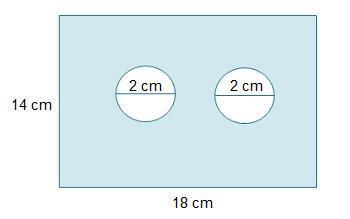
Mathematics, 22.04.2021 06:10 pippalotta
Is the national crime rate really going down? Some sociologists say yes! They say that the reason for the decline in crime rates in the 1980s and 1990s is demographics. It seems that the population is aging, and older people commit fewer crimes. According to the FBI and the Justice Department, 70% of all arrests are of males aged 15 to 34 years†. Suppose you are a sociologist in Rock Springs, Wyoming, and a random sample of police files showed that of 35 arrests last month, 27 were of males aged 15 to 34 years. Use a 10% level of significance to test the claim that the population proportion of such arrests in Rock Springs is different from 70%.
A button hyperlink to the SALT program that reads: Use SALT.
(a) What is the level of significance?
State the null and alternate hypotheses.
H0: p = 0.7; H1: p ≠ 0.7
H0: p = 0 .7; H1: p < 0.7
H0: p < 0 .7; H1: p = 0.7
H0: p = 0.7; H1: p > 0.7
H0: p ≠ 0.7; H1: p = 0.7
(b) What sampling distribution will you use?
The Student's t, since np < 5 and nq < 5.
The standard normal, since np < 5 and nq < 5.
The standard normal, since np > 5 and nq > 5.
The Student's t, since np > 5 and nq > 5.
What is the value of the sample test statistic? (Round your answer to two decimal places.)
(c) Find the P-value of the test statistic. (Round your answer to four decimal places.)
Sketch the sampling distribution and show the area corresponding to the P-value.
WebAssign Plot WebAssign Plot
WebAssign Plot WebAssign Plot
(d) Based on your answers in parts (a) to (c), will you reject or fail to reject the null hypothesis? Are the data statistically significant at level ?
At the = 0.10 level, we reject the null hypothesis and conclude the data are statistically significant.
At the = 0.10 level, we reject the null hypothesis and conclude the data are not statistically significant.
At the = 0.10 level, we fail to reject the null hypothesis and conclude the data are statistically significant.
At the = 0.10 level, we fail to reject the null hypothesis and conclude the data are not statistically significant.
(e) Interpret your conclusion in the context of the application.
There is sufficient evidence at the 0.10 level to conclude that the true proportion of arrests of males aged 15 to 34 in Rock Springs differs from 70%.
There is insufficient evidence at the 0.10 level to conclude that the true proportion of arrests of males aged 15 to 34 in Rock Springs differs from 70%.

Answers: 2


Other questions on the subject: Mathematics

Mathematics, 21.06.2019 16:30, pennygillbert
Which of the following answers is 5/25 simplified? 1/5 5/5 2/5 1/25
Answers: 2

Mathematics, 21.06.2019 19:30, makaylahunt
Aregular pentagon with a perimeter of 21 inches is dilated by a scale factor of 5/3 to create a new pentagon. what is the perimeter of the new pentagon?
Answers: 2

Mathematics, 21.06.2019 22:30, dessyrob05
Complete the equation of the live through (-1,6) (7,-2)
Answers: 1

Mathematics, 22.06.2019 03:30, madison1284
On a certain portion of an experiment, a statistical test result yielded a p-value of 0.21. what can you conclude? 2(0.21) = 0.42 < 0.5; the test is not statistically significant. if the null hypothesis is true, one could expect to get a test statistic at least as extreme as that observed 21% of the time, so the test is not statistically significant. 0.21 > 0.05; the test is statistically significant. if the null hypothesis is true, one could expect to get a test statistic at least as extreme as that observed 79% of the time, so the test is not statistically significant. p = 1 - 0.21 = 0.79 > 0.05; the test is statistically significant.
Answers: 3
You know the right answer?
Is the national crime rate really going down? Some sociologists say yes! They say that the reason fo...
Questions in other subjects:





Mathematics, 22.08.2019 02:30





Mathematics, 22.08.2019 02:30




